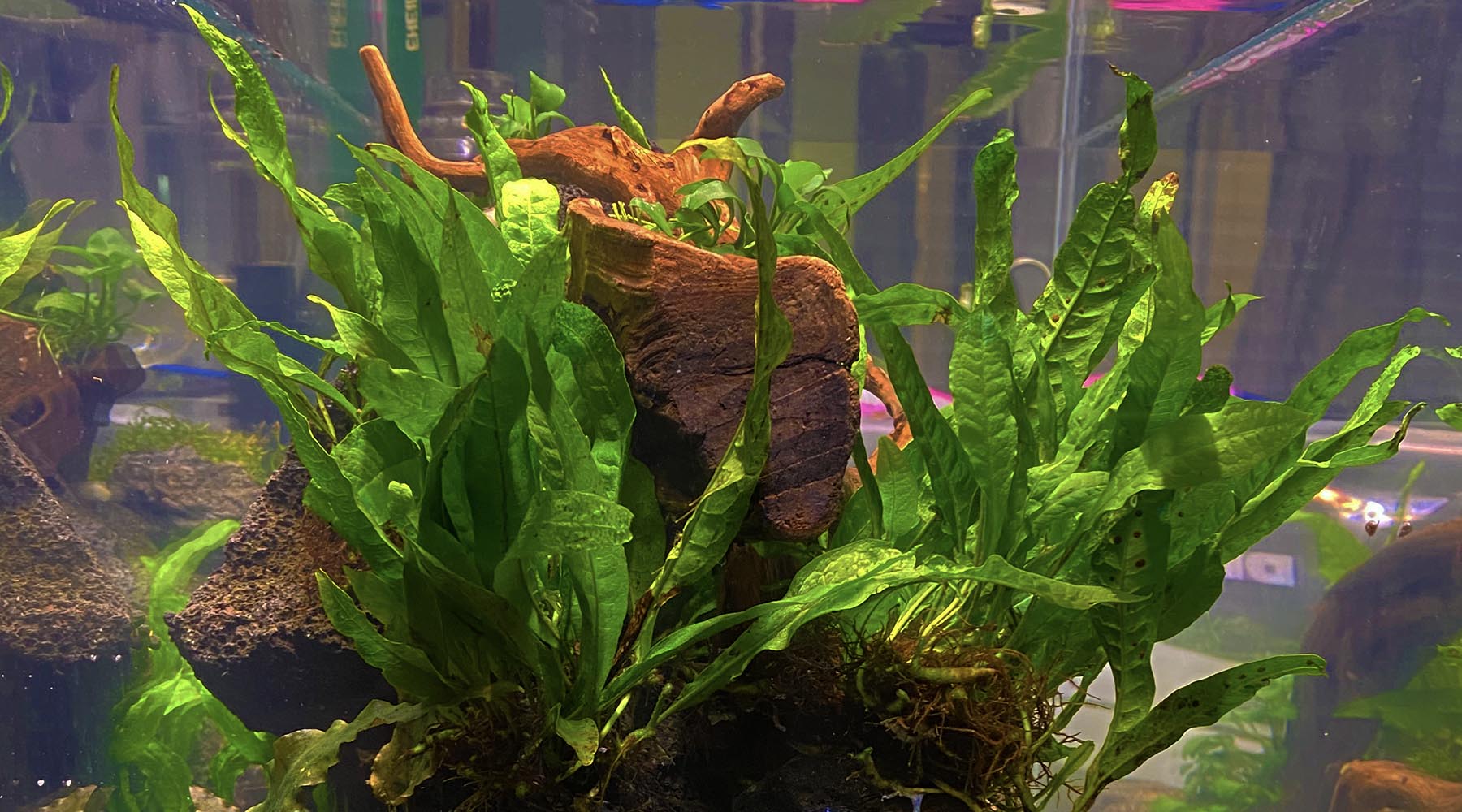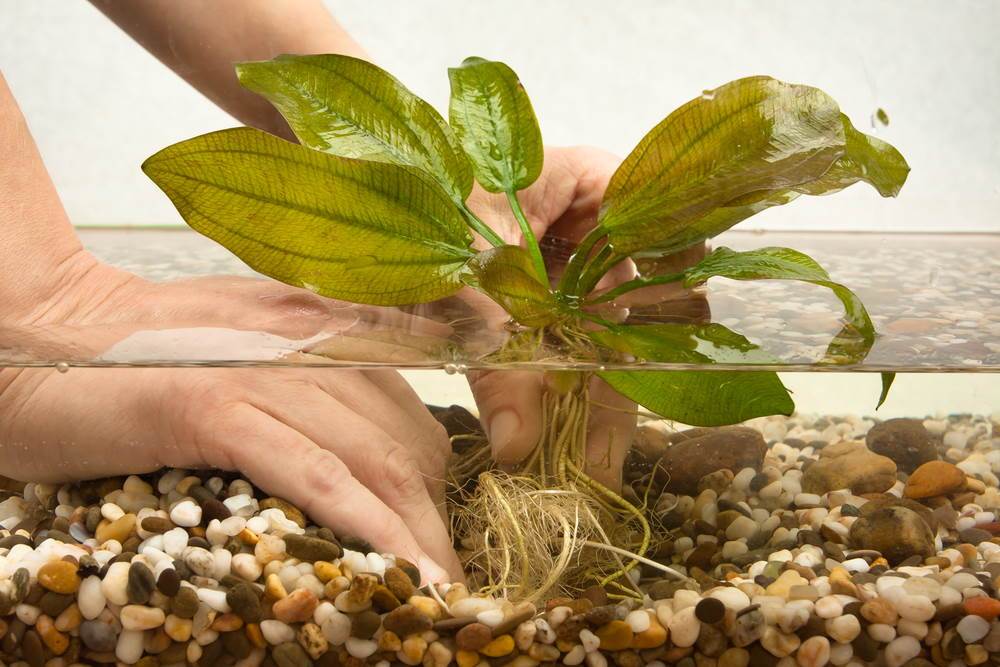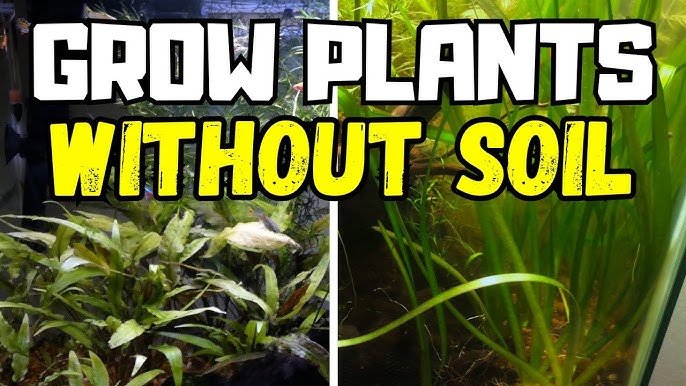Planting aquarium plants without soil is possible and easier than you might think. It allows you to have a beautiful, low-maintenance aquarium.
Aquarium enthusiasts often wonder if it’s possible to plant without soil. The good news is, you can create a thriving underwater garden without the mess of soil. Using alternatives like gravel, sand, or special planting mats, you can give your aquarium plants the support they need.
This method keeps your tank cleaner and makes maintenance simpler. Plus, it offers a creative way to design your aquatic space. In this guide, we’ll explore how to plant aquarium plants without soil, ensuring your plants grow healthy and strong. Get ready to dive into a soil-free aquascaping adventure!

Credit: www.youtube.com
Introduction To Soil-less Aquarium Plants
Planting aquarium plants without soil is becoming popular among aquarists. It’s a clean, easy, and efficient method. It also gives a unique look to your tank. This technique is perfect for beginners and pros alike. You don’t need to worry about soil-related issues. Let’s explore more about soil-less aquarium plants.
Benefits Of Soil-less Planting
Soil-less planting offers many advantages. Here are some key benefits:
- Cleaner Tank: No soil means no mess. Your tank stays clear.
- Easy Maintenance: Less frequent cleaning. Less debris.
- Reduced Algae Growth: Fewer nutrients for algae. Cleaner water.
- Healthier Plants: Direct nutrient absorption. Faster growth.
Types Of Plants Suitable
Not all plants thrive without soil. Here are some suitable choices:
| Plant Type | Characteristics |
|---|---|
| Anubias | Slow-growing. Tolerant of low light. Easy to care. |
| Java Fern | Hardy plant. Can grow on rocks and driftwood. |
| Marimo Moss Ball | Unique look. Requires minimal care. |
| Buchephalandra | Colorful leaves. Grows well on hard surfaces. |
These plants adapt well without soil. They can attach to rocks or driftwood. This gives your tank a natural look. Plus, they are easy to maintain. Perfect for any aquarium hobbyist.
Choosing The Right Plants
Planting aquarium plants without soil can be done using floating plants, attaching them to rocks, or using special substrates. This method helps maintain cleaner water and reduces the risk of algae growth.
Selecting the right plants is crucial for a thriving aquarium. Without soil, you need plants that can anchor to rocks or driftwood. Not all plants will do well in this setup. Some need soil for nutrients. Here are some key factors to consider:Low-maintenance Options
Low-maintenance plants are great for beginners. They need less care and are hardy. Java Fern is one such plant. It attaches to rocks or driftwood. Anubias is another good choice. It grows slowly and does well in low light. Both of these plants can thrive without soil.High-light Vs Low-light Plants
Light levels affect plant growth. High-light plants need intense light to grow well. Examples include Dwarf Baby Tears and Monte Carlo. Low-light plants need less light. They can thrive in shaded areas. Java Moss and Cryptocoryne are good examples. Choose plants based on the light available in your aquarium. “`Preparing The Aquarium
Setting up your aquarium correctly is essential. It ensures your plants thrive without soil. This process involves several steps. Let’s dive into the details.
Cleaning The Tank
Start by cleaning the tank thoroughly. Remove any debris or algae. Use a soft sponge and warm water. Avoid using harsh chemicals. They can harm your plants and fish.
Ensure the tank is spotless. Rinse it well to remove any residues. This step is crucial for a healthy environment.
Setting Up The Environment
Now, set up the environment in your tank. This includes placing rocks, driftwood, and other decorations. These items provide support for your plants. They also enhance the tank’s aesthetics.
- Rocks: Choose smooth, non-toxic rocks.
- Driftwood: Ensure it’s aquarium-safe. Boil it to remove any pests.
- Decorations: Add safe, plant-friendly decorations.
Arrange these items creatively. Provide ample space for plant roots to attach. This setup mimics a natural habitat, promoting plant health.
Next, consider using plant weights or anchors. These help keep plants in place. They prevent floating and ensure roots attach firmly.
Finally, fill your tank with water. Use dechlorinated water to avoid harming your plants. Fill the tank slowly to avoid disturbing the setup. Now, your aquarium is ready for planting!

Credit: www.2hraquarist.com
Alternative Planting Methods
Planting aquarium plants without soil can be a challenge. Traditional soil isn’t always available or desired. Luckily, there are alternative methods to successfully plant and grow aquatic plants. Two popular methods include using driftwood and rock planting techniques.
Using Driftwood
Driftwood provides a natural look in aquariums. It also offers a stable surface for plants. Follow these steps to use driftwood:
- Select the right driftwood: Choose a piece that fits your tank and offers plenty of surface area.
- Prepare the driftwood: Boil it to remove any harmful substances and to make it sink.
- Attach the plants: Use fishing line or thread to tie plants like Anubias or Java Fern to the driftwood.
Rock Planting Techniques
Rocks are another excellent option for planting aquarium plants. They provide a sturdy base and add to the aesthetic appeal of the tank. Here’s how to use rocks for planting:
- Select suitable rocks: Choose rocks that are aquarium-safe, such as lava rock or slate.
- Clean the rocks: Rinse them thoroughly to remove any debris or contaminants.
- Attach the plants: Plants like Moss or Bucephalandra can be tied to the rocks with fishing line or thread. Alternatively, use aquarium-safe glue to secure the plants.
Both driftwood and rocks provide excellent alternatives to soil for planting aquarium plants. They offer stability and enhance the beauty of your underwater environment.
Securing Plants Without Soil
Planting aquarium plants without soil might seem challenging at first. Many aquarists want to create beautiful underwater gardens. Yet, they prefer not to deal with messy soil. Luckily, there are ways to secure plants without soil. This method keeps your tank clean and your plants healthy.
Using Fishing Line
Fishing line can be a fantastic tool. Tie the plant roots gently with the line. Attach them to rocks or driftwood. Make sure the line is not too tight. This ensures the roots are not damaged. Over time, the plant will attach itself naturally. The line will become almost invisible in the water. It’s a simple and effective technique.
Aquarium Safe Glue
Aquarium safe glue is another great option. Apply a small amount to the base of the plant. Press it firmly onto a rock or decoration. Hold it for a few seconds. The glue will set quickly. Ensure the glue you use is safe for aquatic life. This method provides a strong hold. It allows you to position plants exactly where you want them.
Nutrient Management
Managing nutrients is key to growing healthy aquarium plants without soil. In a soil-free setup, plants still need essential nutrients to thrive. Understanding how to provide these nutrients will ensure your plants grow well.
Liquid Fertilizers
Liquid fertilizers are a simple way to add nutrients to your aquarium. They are mixed with the water and absorbed by the plants. These fertilizers provide essential nutrients like iron, potassium, and nitrogen. Regular dosing keeps plants healthy and vibrant.
Check the label for dosing instructions. Over-fertilizing can harm plants and fish. Always start with a small dose and observe your plants’ response. Adjust the amount as needed. Consistent use ensures your plants get the nutrients they need.
Root Tabs
Root tabs are solid fertilizers placed near the plant roots. They release nutrients slowly over time. This method is ideal for root-feeding plants like swords and crypts. Insert the tabs into the substrate near the plant base.
Root tabs provide a steady nutrient supply. They reduce the need for frequent liquid dosing. Replace them every few months for continuous nutrient delivery. This method helps maintain a nutrient-rich environment for your plants.
Maintaining Healthy Plants
Keeping your aquarium plants healthy without soil can be challenging. But it is possible with the right care. Focus on regular trimming and monitoring water parameters. These tasks can ensure your plants thrive.
Regular Trimming
Trimming is vital for the health of your plants. It helps promote new growth. Use sharp scissors to trim the plants. Remove any dead or yellow leaves. This prevents decay and keeps the water clean.
Trim the plants regularly. This helps maintain their shape. It also prevents them from taking over the tank. Healthy plants will grow faster. Regular trimming ensures they do not become overcrowded.
Monitoring Water Parameters
Water quality is crucial for plant health. Monitor the water parameters regularly. Check the pH, temperature, and hardness. Use a water testing kit for accuracy.
| Parameter | Ideal Range |
|---|---|
| pH | 6.5 – 7.5 |
| Temperature | 72°F – 82°F |
| Hardness | 4 – 12 dKH |
Ensure the water is clean and clear. Perform regular water changes. This helps remove any toxins. It also provides fresh nutrients for the plants.
Consider adding liquid fertilizers. These can provide essential nutrients. Use them according to the instructions. Over-fertilizing can harm the plants.
Maintaining healthy plants in an aquarium without soil is possible. Regular trimming and monitoring water parameters are key. Follow these steps for a vibrant and thriving aquarium.

Credit: www.aquariumcoop.com
Common Challenges And Solutions
Planting aquarium plants without soil can be a rewarding challenge. But it also comes with its share of common issues. Understanding and addressing these challenges can ensure a thriving, beautiful aquarium.
Dealing With Algae
Algae can quickly become a problem in your tank. They compete with your plants for light and nutrients. This can stunt plant growth and make the tank look dirty.
Here are some common solutions to control algae:
- Reduce Lighting: Limit the amount of light your tank receives. Aim for 6-8 hours of light per day.
- Regular Maintenance: Clean your tank regularly. Remove any visible algae.
- Algae Eaters: Introduce algae-eating fish or snails. They help keep algae growth in check.
Plant Nutrient Deficiencies
Without soil, plants may lack essential nutrients. This can lead to yellowing leaves and poor growth.
Addressing plant nutrient deficiencies involves:
- Liquid Fertilizers: Use liquid fertilizers designed for aquarium plants. They provide essential nutrients directly to the water.
- Root Tabs: Place root tabs near plant roots. They release nutrients slowly, feeding your plants over time.
- Balanced Diet: Ensure a balanced diet for fish. Fish waste acts as a natural fertilizer, providing some nutrients for plants.
Monitor plant health regularly. Adjust your approach as needed to keep your plants vibrant.
Frequently Asked Questions
Can Aquarium Plants Grow Without Soil?
Yes, aquarium plants can grow without soil. You can use substrates like gravel, sand, or specialized planting media. These materials provide support and nutrients.
What Is The Best Substrate For Aquarium Plants?
The best substrate depends on the plant species. Common options include gravel, sand, and specialized planting media. Each has its benefits.
How Do You Plant Aquarium Plants Without Soil?
Anchor plants to driftwood, rocks, or use plant weights. Ensure roots are in contact with nutrients. Regular maintenance is key.
Are There Benefits To Growing Aquarium Plants Without Soil?
Yes, it prevents soil-related issues like compaction and nutrient imbalances. It also allows for easier tank maintenance and cleaning.
Conclusion
Planting aquarium plants without soil is simple and effective. Just follow the steps. Use gravel, sand, or floating plants. Ensure proper lighting and nutrients. Monitor water quality regularly. Enjoy a thriving, beautiful aquatic environment. Happy planting!





